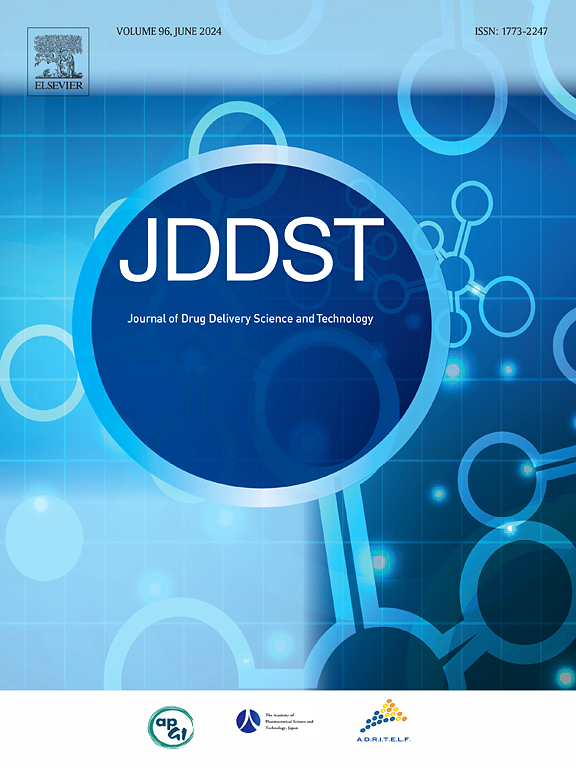Mixing efficiency of pharmaceutical powders in an intensive mixer with rotating mixing vessel (EIRICH Intensive Mixer)
IF 4.5
3区 医学
Q1 PHARMACOLOGY & PHARMACY
Journal of Drug Delivery Science and Technology
Pub Date : 2025-03-20
DOI:10.1016/j.jddst.2025.106845
引用次数: 0
Abstract
The mixing of ductile lubricant particles is known to have several negative effects on tablet properties, such as decreased hardness and delayed disintegration. This study investigated the usefulness of a mixing system using an intensive mixer with a rotating mixing vessel (EIRICH Intensive Mixer) for blending lubricants. To confirm the suitability of lubricant-mixing conditions (rotor types, rotation speed, and mixing time), we mixed lactose/cornstarch with two types of lubricants (magnesium stearate and sodium stearyl fumarate), prepared tablets made from the mixtures, and evaluated their properties. Mixing with a star rotor suppressed the negative effects of lubricants on tablet properties more effectively than mixing with a microgranulation rotor (Z rotor). To verify the usefulness of this mixing system in direct tableting, the formulations for direct compression with SuperTab®14SD or SmartEx® as excipients and acetaminophen (AAP) (10 %) as an active pharmaceutical ingredient were used. The results confirmed the effectiveness of lubrication for tableting by evaluating the ratio of lower punch pressure to upper punch pressure and the uniform dispersion of AAP using near-infrared (NIR) spectroscopy. Finally, the process of mixing lubricants collectively with the active pharmaceutical ingredient and other ingredients was evaluated. The results showed that this mixing system using an intensive mixer effectively mixed all the ingredients in the formulation. This study clarified the usefulness of an intensive mixer in blending lubricants for pharmaceutical formulations.

求助全文
约1分钟内获得全文
求助全文
来源期刊
CiteScore
8.00
自引率
8.00%
发文量
879
审稿时长
94 days
期刊介绍:
The Journal of Drug Delivery Science and Technology is an international journal devoted to drug delivery and pharmaceutical technology. The journal covers all innovative aspects of all pharmaceutical dosage forms and the most advanced research on controlled release, bioavailability and drug absorption, nanomedicines, gene delivery, tissue engineering, etc. Hot topics, related to manufacturing processes and quality control, are also welcomed.

 求助内容:
求助内容: 应助结果提醒方式:
应助结果提醒方式:


